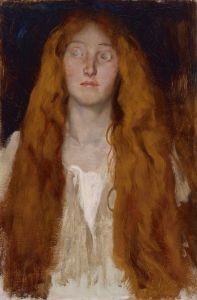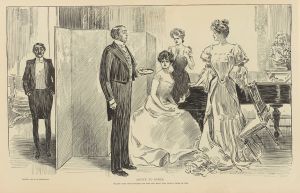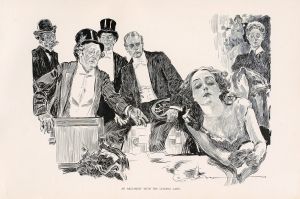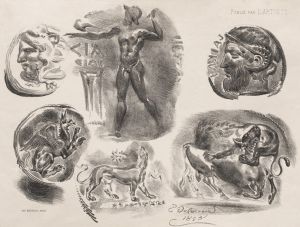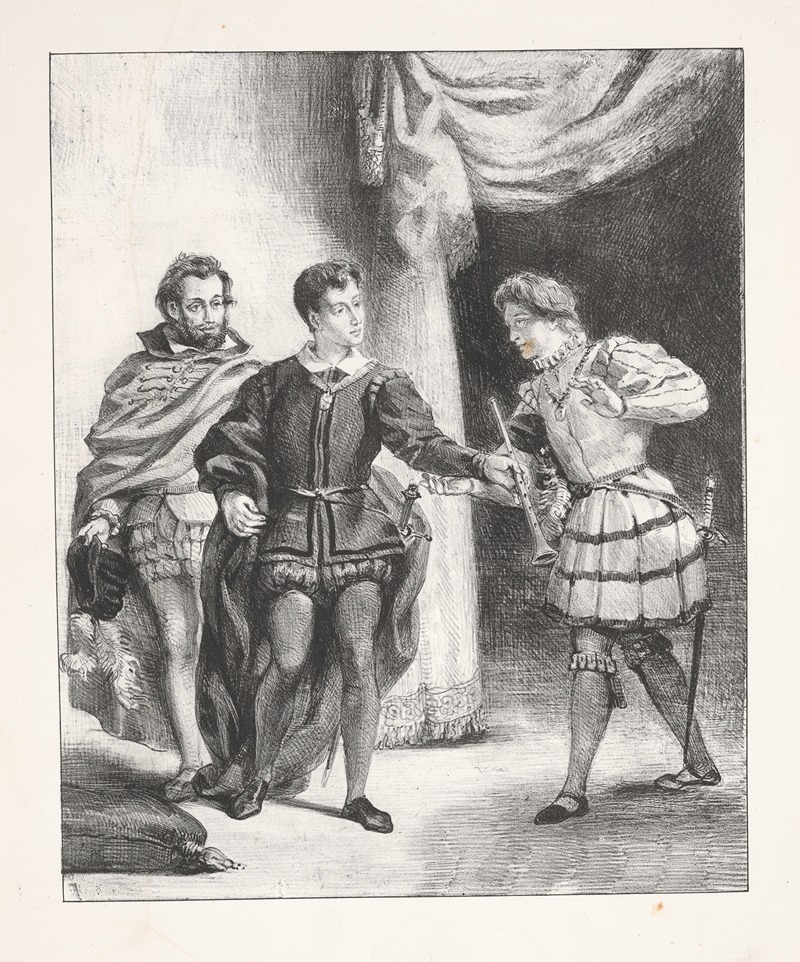
Hamlet and Guildenstern
A hand-painted replica of Eugène Delacroix’s masterpiece Hamlet and Guildenstern, meticulously crafted by professional artists to capture the true essence of the original. Each piece is created with museum-quality canvas and rare mineral pigments, carefully painted by experienced artists with delicate brushstrokes and rich, layered colors to perfectly recreate the texture of the original artwork. Unlike machine-printed reproductions, this hand-painted version brings the painting to life, infused with the artist’s emotions and skill in every stroke. Whether for personal collection or home decoration, it instantly elevates the artistic atmosphere of any space.
Eugène Delacroix, a prominent French Romantic artist, is known for his expressive brushwork and vibrant use of color. Among his many works, "Hamlet and Guildenstern" stands out as a significant piece that reflects his interest in literature and drama, particularly the works of William Shakespeare. Delacroix's fascination with Shakespearean themes is evident in several of his paintings and lithographs, where he explores the complex characters and dramatic narratives of the Bard's plays.
"Hamlet and Guildenstern" is a painting that captures a moment from Shakespeare's tragedy "Hamlet." The play, written around 1600, is one of Shakespeare's most famous works and delves into themes of revenge, madness, and the complexity of human nature. Delacroix's painting likely depicts a scene involving Prince Hamlet and Guildenstern, one of the courtiers sent by King Claudius to spy on Hamlet. The relationship between Hamlet and the courtiers Rosencrantz and Guildenstern is marked by tension and deceit, as they are tasked with uncovering the cause of Hamlet's apparent madness.
Delacroix's interpretation of this scene would have been influenced by his Romantic sensibilities, emphasizing emotion, drama, and the psychological depth of the characters. His use of color and dynamic composition would have been employed to convey the intensity of the moment and the inner turmoil of the characters. Delacroix was known for his ability to capture the essence of a narrative through his art, and "Hamlet and Guildenstern" would have been no exception.
The painting is part of Delacroix's broader engagement with literary themes, which was a common practice among Romantic artists who sought to express the emotional and intellectual currents of their time. Delacroix's work often reflects a deep understanding of the literary sources he drew upon, and his ability to translate these complex narratives into visual form is a testament to his skill as an artist.
While specific details about the painting "Hamlet and Guildenstern" such as its current location, dimensions, and medium, are not readily available, it is clear that Delacroix's engagement with Shakespearean themes was a significant aspect of his artistic output. His works continue to be studied and admired for their emotional depth and technical mastery, and "Hamlet and Guildenstern" would have contributed to his reputation as a leading figure in the Romantic movement.
Delacroix's legacy as an artist is marked by his ability to convey the drama and emotion of his subjects, whether they be historical events, literary scenes, or contemporary life. His paintings remain influential, and his interpretations of Shakespearean themes continue to resonate with audiences today, offering a window into the rich interplay between literature and visual art during the Romantic period.





